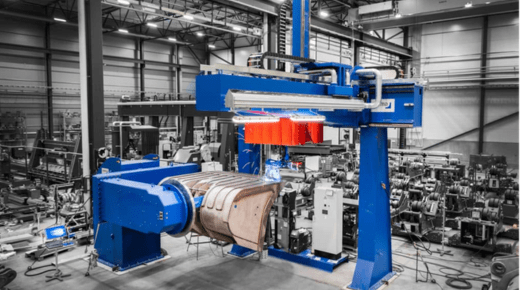In the competitive realm of modern manufacturing, achieving high levels of efficiency and precision is crucial for maintaining a competitive edge. Advanced industrial welding solutions are at the forefront of this transformation, driving innovations that streamline operations and enhance the quality of finished products. This article explores the latest advancements in industrial welding technologies, their impact on manufacturing efficiency, and their role in ensuring precision.
Innovations in Welding Technology
Automation and Robotics
One of the most significant advancements in industrial welding solutions is the integration of automation and robotics. Automated welding systems have revolutionized the manufacturing process by increasing production speed and consistency. Robotic welders are capable of performing repetitive tasks with unparalleled precision, reducing the margin for error and minimizing the need for manual intervention.
Robotic welding systems can be programmed to execute complex weld patterns and handle various materials, from metals to composites. This flexibility allows manufacturers to adapt quickly to changing production demands and ensure high-quality welds across different products.
Laser Welding
Laser welding is another cutting-edge technology that has gained prominence in the industrial sector. This technique uses a laser beam to melt and fuse materials, creating strong and precise welds. Laser welding offers several advantages, including reduced heat distortion, minimal post-weld cleanup, and the ability to weld thin materials with high accuracy.
The precision of laser welding makes it ideal for applications where tight tolerances are required, such as in the aerospace and automotive industries. Additionally, laser welding’s efficiency reduces production times and costs, further enhancing its appeal as an advanced welding solution.
Ultrasonic Welding
Ultrasonic welding is a process that employs high-frequency ultrasonic vibrations to join materials. This method is particularly effective for welding thermoplastics and thin metals. Ultrasonic welding provides fast processing times and strong welds without the need for additional materials like flux or fillers.
This technology is increasingly used in the electronics and medical device industries, where precision and reliability are paramount. Ultrasonic welding’s ability to create clean and consistent welds contributes to higher product quality and performance.
Enhancing Manufacturing Efficiency
Reduced Production Costs
Advanced industrial welding solutions contribute significantly to reducing production costs. Automated systems and robotic welders increase throughput and minimize labor costs, as they can operate continuously with minimal downtime. Additionally, the precision of modern welding technologies reduces material waste and rework, further lowering expenses.
Laser and ultrasonic welding technologies also contribute to cost savings by eliminating the need for additional processing steps and reducing the consumption of consumables. This efficiency translates into lower overall production costs and a more competitive pricing structure for manufacturers.
Improved Product Quality
Quality control is a critical aspect of manufacturing, and advanced welding solutions play a vital role in enhancing product quality. The precision offered by robotic, laser, and ultrasonic welding ensures consistent welds with minimal defects. This high level of accuracy translates into stronger, more durable products that meet or exceed industry standards.
Furthermore, advanced welding technologies enable manufacturers to achieve tighter tolerances and complex weld geometries that were previously challenging or impossible to achieve. This capability results in products with superior structural integrity and performance.
Applications in Various Industries
Aerospace and Defense
In the aerospace and defense industries, where safety and reliability are paramount, advanced industrial welding solutions are essential. Laser welding’s precision and strength make it ideal for components subjected to extreme conditions. Robotic welding systems ensure consistent quality and efficiency in the production of aircraft parts and defense equipment.
Automotive
The automotive industry benefits greatly from advanced welding technologies, which contribute to the production of lightweight and fuel-efficient vehicles. Robotic welding systems are used extensively in assembly lines to weld body panels and other components, while laser welding is employed for high-strength joints and thin materials.
Electronics and Medical Devices
In the electronics and medical device sectors, ultrasonic welding’s precision and cleanliness are invaluable. This technology is used to join components in electronic assemblies and medical devices, ensuring reliable performance and compliance with stringent quality standards.
Conclusion
Advanced industrial welding solutions are transforming the manufacturing landscape by enhancing efficiency and precision. Automation, laser welding, and ultrasonic welding technologies are driving innovations that reduce production costs, improve product quality, and enable manufacturers to meet the demands of various industries. As these technologies continue to evolve, they will play an increasingly vital role in shaping the future of manufacturing, offering new opportunities for growth and advancement. Embracing these advancements in industrial welding solutions is essential for manufacturers looking to stay competitive and achieve excellence in their operations.





